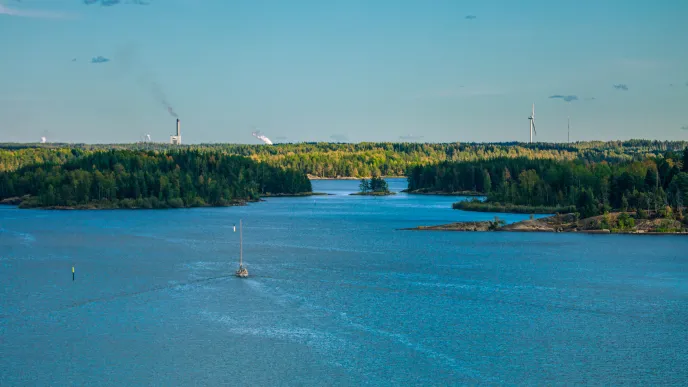At the United Nations’ Climate Change Conference COP28, 25 countries, including Finland, declared their intention to triple global nuclear energy capacity by 2050. The expansion includes plans for small modular reactors (SMRs), intended for electricity generation and combined heat and power production in the Finnish context.
LUT’s analysis of the nuclear power expansion scenarios in the Finnish energy system reveals that prioritising nuclear power over renewables leads to significantly higher costs and financial risks.
Nuclear scenarios show a 71–84% higher annualised system cost compared to a renewables-based system in 2050. The system cost difference represents about 2.3% of the national gross domestic product.
The levelised cost of electricity in nuclear scenarios is 99–115% higher compared to the cost-optimal reference scenario, and the levelised cost of final energy is 72–84% higher.
The levelised cost is calculated by dividing the overall annualised energy system costs by the amount of energy that is used. The reference scenario, which simulates a zero-emission target, indicates that new nuclear power plants are not cost-efficient.
The Curious People newsletter shares our solutions for helping build resilient communities, industry, and businesses while promoting the energy transition and the regenerative use of natural resources.
SMRs not yet commercially available
Nuclear power involves more risks than a renewables-based system, including costs, long lead times, and uranium supply uncertainties.
In addition, SMR technologies are not yet commercially available. The analysis assumed they would be by 2035, with decreasing costs, but they may still be significantly more expensive than a renewables-based system – even with subsidised financing (5% cost of capital).
Reliance on nuclear power in long-term planning may lead to an energy deficit.
New electricity generation projects are needed immediately, and reliance on nuclear power in long-term planning may lead to an energy deficit if SMRs are not commercialised or the construction of conventional nuclear power plants is delayed, as seen in past projects.
The high costs and centralised infrastructure of nuclear power raise concerns about distributive justice, as these costs may burden low-income households and exacerbate existing inequalities. In addition, the centralised nature of nuclear power limits opportunities for broad stakeholder involvement, calling procedural justice in energy decision-making into question.
Expanding nuclear power risks locking society into a centralised and inflexible energy system, which may hinder the development of more innovative and cost-effective alternatives.
How should the future energy system be built?
Policy should aim for an affordable, fully defossilised, resilient, and just energy system. Market forces should determine the precise energy mix. This would naturally phase out uncompetitive options and safeguard the competitiveness of Finland's energy-intensive industries.
Prioritising investments in renewable energy sources and sector coupling technologies, such as Power-to-X, would enable significant savings in fossil-free energy system investments. The reference scenario achieves necessary system flexibility through higher electric heater capacities, higher electrolyser capacity, and more hydrogen storage capacity compared to nuclear scenarios.
Policies should advance a more equitable, inclusive, and adaptable energy system based on decentralised renewables.
A quick roll-out of renewables across the country would require fast-tracking the permit process for grid expansion, a grid connection procedure for renewable projects, and a regularly updated national grid expansion plan.
Policies should advance a more equitable, inclusive, and adaptable energy system based on decentralised renewables. Wind power and solar photovoltaics support decentralised innovation and participation, allowing diverse stakeholders – including local communities – to contribute to and benefit from the system.


Salvatore Ruggiero






